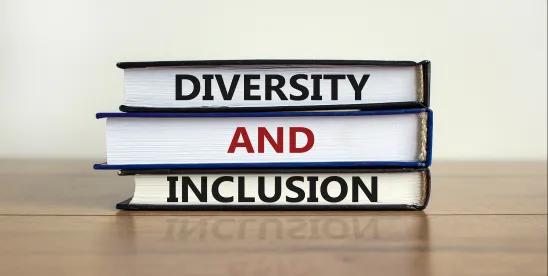What do missing bolts on an airplane door and employer diversity, equity, and inclusion (DEI) programs have in common? Texas Attorney General (AG) Ken Paxton is determined to link the two. Many DEI initiatives are lawful, and the AG’s initiative is a reminder to employers to ensure their DEI programs are carefully designed, documented, and implemented to comply with applicable law.
AG Paxton Investigates
AG Paxton on March 28, 2024, announced an investigation into a manufacturer of commercial airplane parts after a series of safety incidents that suggested manufacturing defects were to blame. As part of his probe into the incidents, AG Paxton requested the company turn over “documents related to its diversity, equity, and inclusion … commitments, and whether those commitments are unlawful or are compromising the company’s manufacturing processes.” AG Paxton requested meeting minutes of the company’s diversity and inclusion counsel; documents on which the company relies “to substantiate its claim that a diverse workplace improves product quality”; documents identifying the company’s employee demographics for race, national origin, sexual orientation, and age before and after the enactment of its DEI policy; and documents showing the demographics for personnel effected by company layoffs in 2020. The probe implies that the company’s DEI efforts somehow resulted in unqualified individuals, which, in turn, compromised quality production and led to safety mishaps.
The investigation is part of the growing trend among DEI opponents to link everything from bank failures to bridge collapses on corporate DEI programs. This, in turn, is part of the larger effort to leverage aggressive legal tactics to discourage companies from pursuing DEI efforts altogether.
10 Steps
Although the connection between manufacturing defects and DEI programs is tenuous at best, employers in all industries would be well-served by evaluating their DEI programming for legal compliance and efficacy. Below are 10 simple steps employers can undertake now to ensure their essential DEI programs are carefully designed, properly documented, and lawful.
- Inventory DEI initiatives. Inventory existing and pending DEI initiatives to clarify their purpose and operations.
- Conduct a DEI diagnostic. Identify the objectives of the organization’s various DEI initiatives and determine whether the programs support those goals. Carefully analyze available data regarding employee populations, promotional practices, and other employment actions to ensure the organization’s DEI initiatives address fact-based gaps.
- Review DEI communications. Review internal and external DEI-related communications. The universe of communications is large, ranging from internal messages to reports to leadership and boards to training documents and messages within and relating to human resources, recruiters, and management processes. Do such communications accurately reflect how the initiatives are implemented? Do they reflect a commitment to equal employment opportunity?
- Ensure collaboration among stakeholders. As with any employee-relations initiatives, ensuring executive buy-in remains critical. Implement a process structure to ensure buy-in, understanding, and consistent operations at all levels, including among DEI officers, human resources professionals, executive leadership, legal professionals, managers, and third parties.
- Train leaders on lawful decision-making, bias. Training is a critical, but often overlooked, component of any DEI initiative. Educate and re-educate human resources professionals, managers, and other operations stakeholders on applicable legal parameters and bias. Ensure decision-makers understand that DEI measures, in and of themselves, do not and should not mandate, instruct, or otherwise sanction decision-making based on protected characteristics.
- Document the reasons for employment decisions. Review processes for documenting employment decisions, which often provide a defense to challenges to discriminatory practices.
- Audit practices for structural barriers to inclusion. Review human resources practices for structural barriers to inclusion. Examine the decision-making processes behind decisions relating to job transfers, promotions, compensation, mentorship, and work assignments. Review job announcements and descriptions to ensure they do not unintentionally limit the pool of job candidates.
- Take complaints seriously. Promptly and effectively process, investigate, and address discrimination and retaliation claims and train anyone who handles such complaints. Aim to ensure that all human resources and supervisory personnel consistently apply and enforce equal employment opportunity, anti-harassment, anti-discrimination, and anti-retaliation policies.
- Review and update existing policies and practices. Conduct periodic update of policies and practices for compliance with applicable law. Having a schedule for the periodic review of applicable policies and practices can help employers quickly respond to legal developments.
- Focus on inclusion, psychological safety, and wellness. Cultivate an inclusive environment where all employees feel they belong and are comfortable contributing their unique perspectives. As some groups ask for more recognition, others may feel that they are losing something. Placing inclusion at the core of an organization’s collective purpose can help mitigate risk and promote open channels for communication.





 />i
/>i

